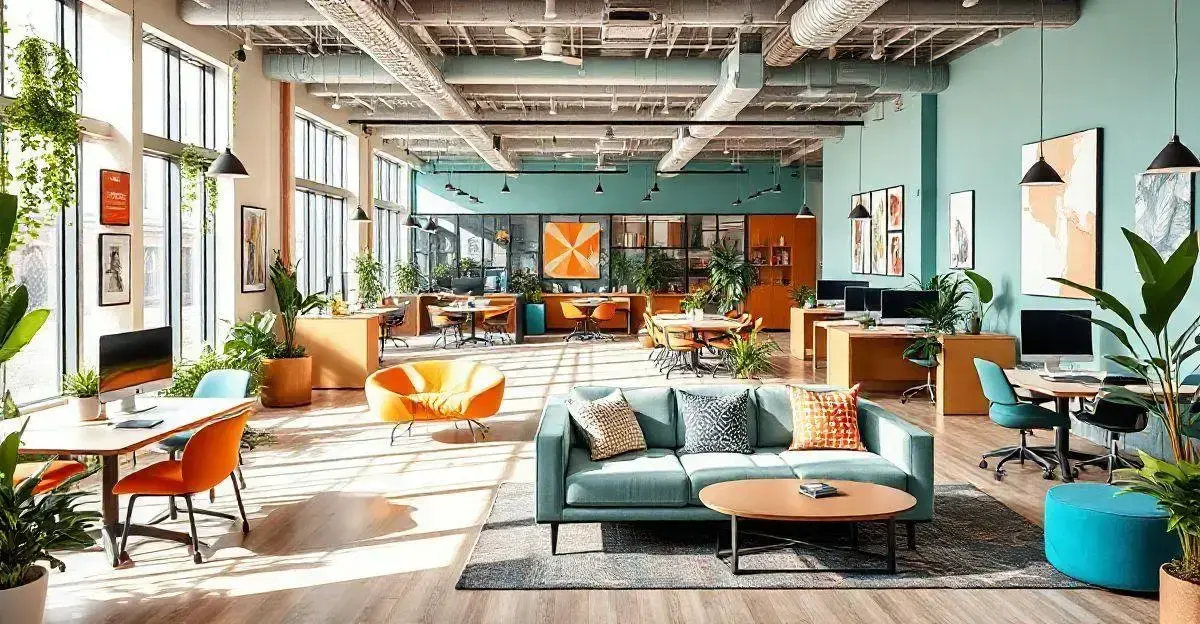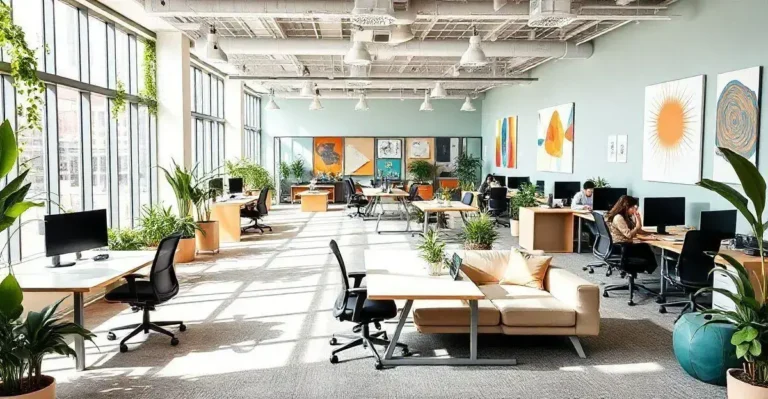Workplace improvement ideas are essential for enhancing productivity and satisfaction within your team. Embracing innovative strategies creates an environment where employees feel valued and empowered. In today’s fast-paced business world, fostering a supportive atmosphere is key to driving engagement and efficiency.
When you prioritize improvements, you not only boost morale but also lay the groundwork for a thriving workplace culture. By focusing on what truly matters to your employees, you can cultivate an atmosphere that encourages creativity and collaboration.
Explore actionable strategies that can transform your work environment, from office design to flexible work arrangements, and discover how you can implement these changes effectively. Keep reading to unlock the potential of your workplace!
Understanding the Need for Workplace Improvements
Understanding the need for workplace improvements is crucial for any organization. Implementing effective workplace improvement ideas leads to higher productivity and employee satisfaction.
Companies often face challenges that hinder growth, such as poor communication, inadequate resources, and stressful atmospheres. Recognizing these issues allows businesses to implement tailored strategies for improvement.
For instance, enhancing office layouts can create a more collaborative atmosphere. Open spaces foster teamwork, while quiet zones offer employees a chance to concentrate. Investing in ergonomic furniture also proves beneficial, as comfort directly impacts performance.
Additionally, conducting regular employee surveys can help organizations pinpoint specific needs and preferences. This feedback fosters an inclusive culture where employees feel valued. Ultimately, prioritizing workplace improvements can result in a motivated workforce and a thriving corporate culture.
Creative Workspace Design Concepts

Creating effective workspace design concepts is vital for boosting employee morale and productivity. Flexible layouts can adapt to various tasks, from collaboration to focused work. Natural lighting enhances mood and well-being, making offices more inviting.
Incorporating color psychology can further influence workplace atmosphere. For example, blue can promote calm and focus, while yellow encourages creativity.
Biophilic design, which involves integrating nature, has been shown to reduce stress and increase employee satisfaction. Adding areas for relaxation and social interaction allows employees to recharge.
Break rooms with comfortable seating and recreational options create a balanced environment. Additionally, personalization of workspaces can make employees feel more at home.
Allowing them to decorate their areas can boost their sense of ownership, leading to enhanced productivity. By considering these design elements within the framework of workplace improvement ideas, companies can create a workspace that not only looks appealing but also effectively meets their employees’ needs.
Implementing Flexible Working Hours
Implementing flexible working hours can significantly enhance employee satisfaction and productivity. This approach allows employees to work when they feel most productive, whether that’s early in the morning or later in the day.
Flexibility can reduce stress and improve overall work-life balance, which is crucial for modern workers. Research shows that when employees have control over their schedules, they feel more trusted and valued by their employers.
Companies may consider offering various options, such as compressed workweeks, where employees work longer hours for fewer days, or remote work opportunities.
These strategies can cater to diverse employee needs and lifestyles, creating a more inclusive workplace environment. Additionally, flexible hours can attract top talent who prioritize work-life balance.
It is essential for companies to establish clear guidelines to ensure productivity remains high. Regular check-ins and performance assessments can help managers understand how flexible hours impact output.
Ultimately, adopting flexible working hours as part of workplace improvement ideas can lead to a happier, more engaged workforce.
Enhancing Communication Among Teams

Enhancing communication among teams is vital for success in the workplace. Effective communication can improve teamwork and project outcomes. It is essential to establish regular check-ins, whether in person or through virtual meetings, to keep everyone on the same page.
Using collaboration tools, such as Slack or Microsoft Teams, allows for real-time communication and sharing of ideas. This fosters a culture where employees feel comfortable expressing their thoughts and concerns.
Encouraging open dialogue is another key factor. Teams should feel safe to voice questions and suggestions without fear of judgment. Active listening from leaders helps build trust and ensures that team members feel valued.
Regular feedback can also enhance communication by clarifying expectations and roles within the team.
Finally, team-building activities can strengthen relationships and improve communication. These activities can range from casual social gatherings to collaborative problem-solving exercises.
By prioritizing communication as part of workplace improvement ideas, companies set the foundation for a more productive and cohesive work environment.
Ways to Foster Employee Wellbeing
Fostering employee wellbeing is essential for a positive workplace culture. Workplace improvement ideas that focus on wellbeing can significantly enhance employee satisfaction and retention.
Wellbeing programs can provide employees with resources for mental and physical health. This can include access to counseling services, fitness classes, and wellness workshops.
Offering flexible work hours is another way to support employees, allowing them to manage their work-life balance better.
Regular team-building activities promote camaraderie and strengthen relationships among coworkers. Activities such as retreats or simple social gatherings can enhance collaboration and trust.
Mindfulness training or workshops on stress management can also equip employees with tools to cope with daily pressures.
Furthermore, creating a positive work environment where employees feel appreciated is crucial. Recognizing achievements, no matter how small, can motivate and inspire staff.
Ultimately, by investing in employee wellbeing, companies can create a more engaged and productive workforce.
Using Technology to Improve Workplace Efficiency

Using technology to improve workplace efficiency is a key strategy for modern businesses. Workplace improvement ideas that leverage technology can lead to significant gains in productivity.
Automation tools can take over repetitive tasks, saving time and allowing employees to focus on more meaningful work. For instance, project management software can streamline workflows, making it easier for teams to collaborate and meet deadlines.
Incorporating cloud-based solutions enables employees to access files and documents from anywhere. This flexibility can lead to better productivity, especially for remote teams.
Additionally, communication tools, like video conferencing and instant messaging, help maintain clear and efficient communication among team members.
Regularly updating and investing in training programs can also empower employees to utilize these technologies effectively. By prioritizing technology in the workplace, companies can boost both efficiency and employee satisfaction.
Workplace Improvement Ideas: Conclusion
Implementing workplace improvement ideas can lead to enhanced productivity and employee satisfaction. By focusing on key areas such as flexible working hours, effective communication, and employee wellbeing, companies create a more engaging environment.
Using technology to streamline processes further supports efficiency, enabling teams to achieve their goals more effectively. Investing in a positive workplace culture not only attracts talent but also retains valuable employees.
Ultimately, the steps taken to improve the workplace environment will benefit both employees and the overall success of the organization.

